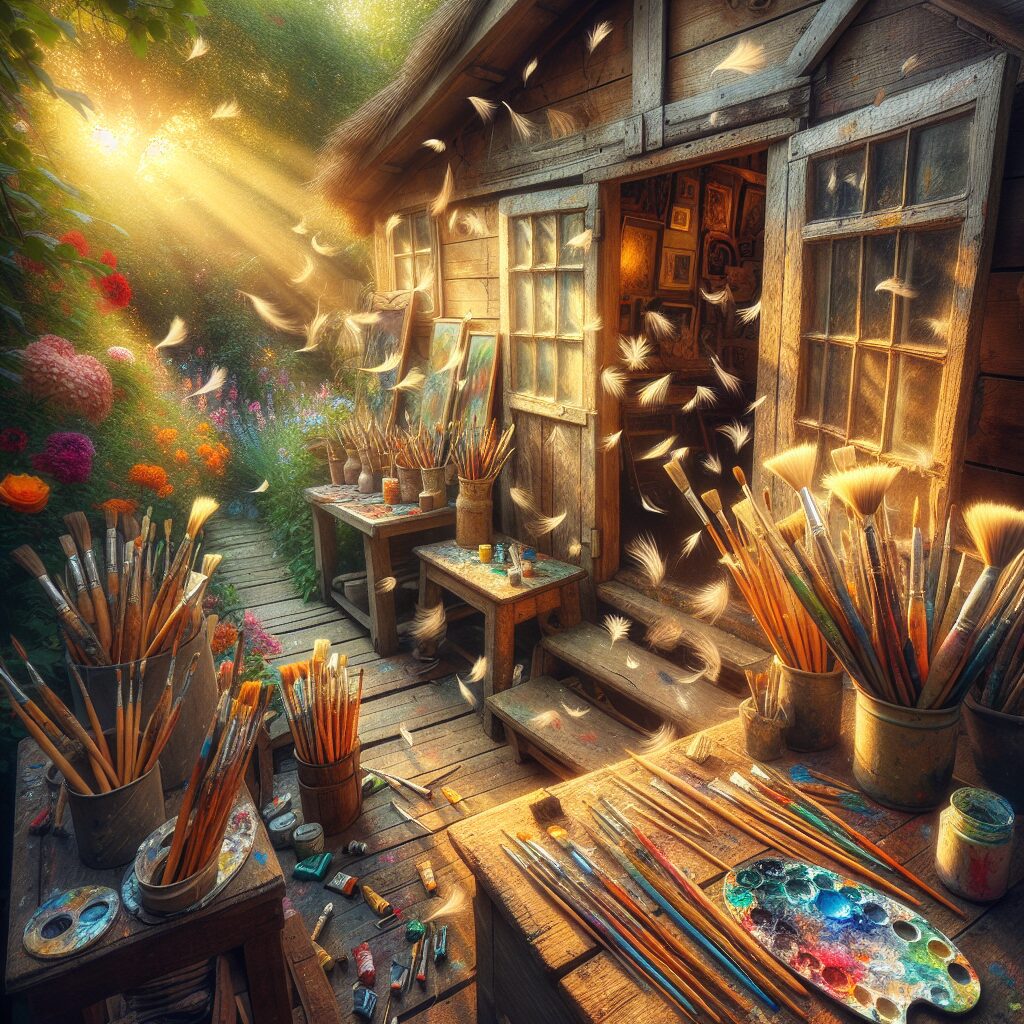Acrylic painting thrives on versatility—bold strokes, delicate blending, rich texture, and infinite creative directions. One of the most overlooked secrets to mastering these diverse outcomes is understanding your brush’s texture. The bristles themselves do far more than hold paint: they directly shape your technique, influence the feel of your painting, and determine how your creative vision translates onto canvas. Whether you’re a beginner eager to develop your skills or a seasoned artist searching for fresh nuances, exploring brush texture will deepen your mastery of acrylics.
The Importance of Brush Texture in Acrylic Painting
Each brush you choose is an extension of your hand, acting as a conduit between your imagination and your artwork. The texture of the bristles—whether soft, stiff, or a hybrid—has a profound impact on how paint behaves and how visible or subtle your brushstrokes appear. Recognizing and harnessing these differences can open new creative doors and elevate your painting style to new heights.
Types of Brush Textures and Their Artistic Effects
Stiff Bristles: Texture and Drama in Every Stroke
Stiff bristle brushes, often made from hog hair or tough synthetics, are all about strength and texture. Their rigidity allows you to manipulate thick paint—perfect for bold impasto applications and expressive, energetic marks.
- Create raised, tactile effects with heavy-bodied acrylics
- Carve out sharp lines or jagged edges for rocks, tree bark, or rough landscapes
- Ideal for adding structure and making brushstrokes an active part of your composition
Try stiff bristle brushes when you want your brush marks to show with character, or when working with techniques requiring control over dense, textured paint.
Soft Bristles: For Subtlety, Blending, and Fine Detail
Soft bristles, typically made from synthetic fibers or soft natural hairs, are designed for gentle touch and control. They excel in situations where you need a smooth finish or seamless transition between colors.
- Efficiently blend colors and create gradients in skies, water, or gentle light
- Use for fine detailing—delicate highlights, petals, feathers, or atmospheric effects
- Lay down thin washes and glazes without disturbing layers below
Soft bristle brushes are suited for artists favoring refined edges, natural transitions, and meticulous detail.
Mixed Bristles: The Best of Both Worlds
Some brushes combine both stiff and soft bristles, providing unique versatility—firm enough for texture, yet yielding enough for smooth blending.
- Great for artists who like to switch between techniques within a single session or painting
- Achieve varied effects without changing brushes constantly
- Useful for layering color and glazing with some resistance for control
Consider mixed bristle brushes when you crave adaptability and want one tool to handle multiple textures and applications.
Techniques to Maximize the Impact of Brush Texture
Dry Brushing: Textured Accents with Stiff Brushes
Dry brushing is a technique where you load a stiff bristle brush with a small amount of paint and sweep it lightly over the surface. This creates broken, scratchy textures—excellent for highlights, weathered wood, grass, and shimmering light.
- Use on rough surfaces or textured canvas to accentuate the texture beneath
- Perfect for adding dimension and “visual noise” to natural subjects in landscapes
Blending: Seamless Transitions with Soft Bristles
When your goal is smooth, flowing gradients—like sunsets, mist, or reflections—a soft bristle brush is your best asset. Use a gentle hand, and let the brush glide paint into your wet layers for an ethereal finish.
- Ideal for skies, water, and backgrounds that require atmospheric subtlety
- Work quickly while paint is still wet to avoid harsh lines
Layering: Depth and Intrigue with Multiple Textures
True depth in acrylic landscapes or portraits comes from the wise use of layering—stacking brush textures atop one another. Start with bold, textured underpaintings using stiff bristles, then refine forms, add shadows, or highlight with soft or mixed bristles above.
- Create visual interest and realism by alternating textural and smooth layers
- Let your previous brush marks peek through to capture light and create organic complexity
Experimentation: Your Pathway to Artistic Growth
Above all, the journey to mastering brush texture is about experimentation. Try each type of brush on scraps or test panels—observe how it deposits paint, how lines break, or how colors merge. Don’t be afraid to combine a variety of brushes within one painting for vibrant, dynamic results.
Conclusion: Unlocking Creativity with Brush Texture
By taking the time to understand and harness how stiff, soft, and mixed bristles affect paint application, you open yourself up to new realms of creative expression. Each texture can enhance a mood, reinforce a focal point, or amplify realism—or abstraction—in your work. Make a habit of experimenting with brush textures in every painting, and watch your technique, confidence, and personal style flourish.
Ready to elevate your brushwork? Discover our unique range of unconventional paintbrushes and art supplies at URARTSTUDIO’s online shop. For more inspiration, explore our valuable painting tips and step-by-step acrylic painting instructions. With the right tools and a spirit of experimentation, your best artwork is always ahead of you!
Keywords: brush texture, acrylic painting techniques, bristle types, painting styles, texture effects, URARTSTUDIO
#brushtexture, #acrylicpaintingtechniques, #bristletype, #paintingstyle, #textureeffect, #URARTSTUDIO



Leave a Reply
You must be logged in to post a comment.